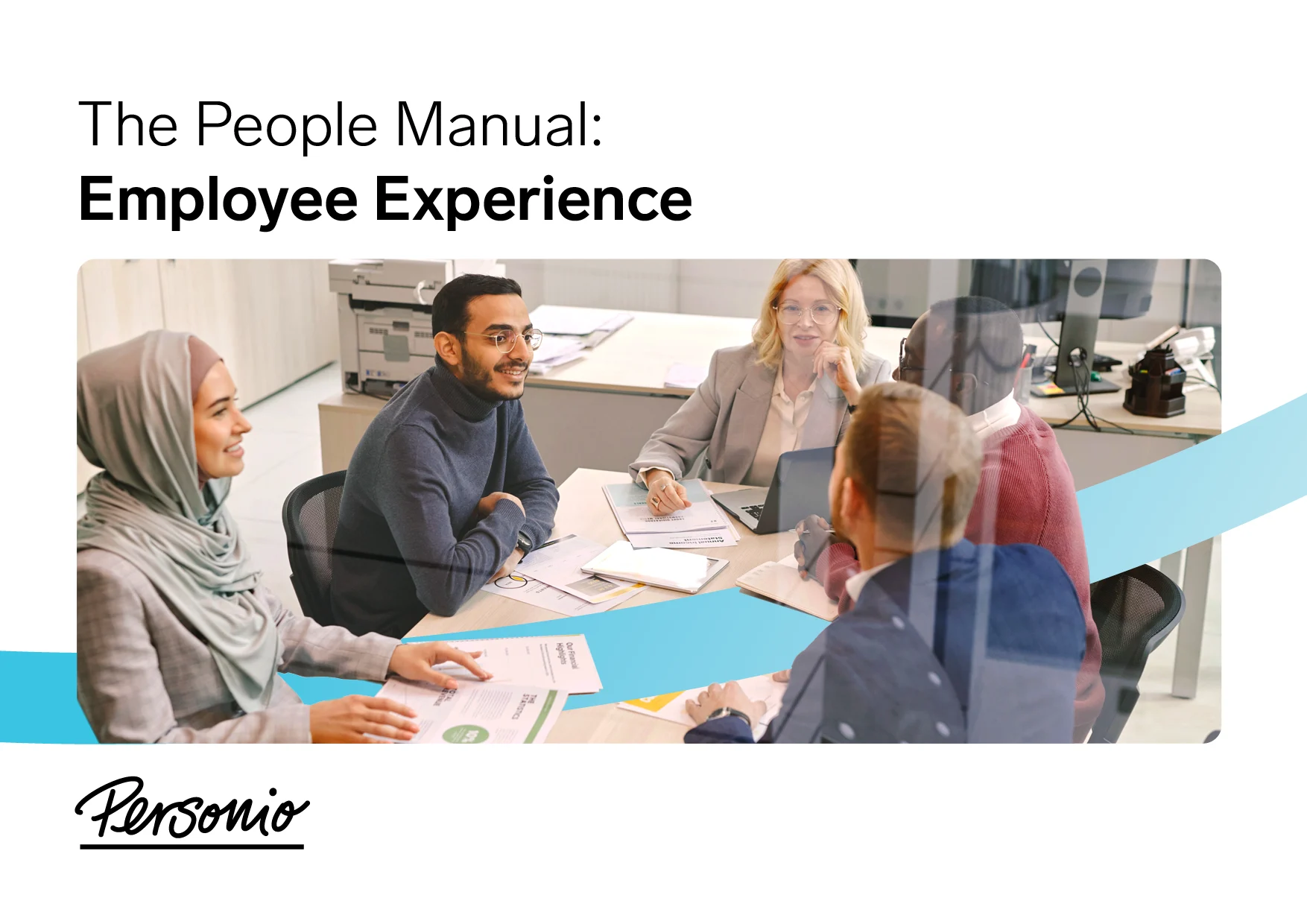How Do You Build A Proper Talent Management Strategy?

Any organisation with employees has to deal with hiring and retention, but not everyone has a solid strategy for talent management. In fact, one Kaplan survey found that nearly half (46%) of respondents did not have a talent management program in place.
Talent management can be an incredibly helpful process. When done correctly, it can attract, develop and retain your highest performers. Here is how to do it correctly.
Get the guideContents
- 1What Is Talent Management?
- 2What Are the Benefits of Talent Management?
- 3How Do You Start a Strategy of Talent Management?
- 4Four Talent Management Best Practices
- 5How Can You Improve Your Talent Management?
- 6What Are Possible Problems Concerning Talent Management?
- 7Which HR Systems Can Help with Talent Management Strategy?
What Is Talent Management?
Talent management is a holistic organisational strategy that aims to attract, develop, motivate, and retain high-performing employees over the long term.
Effective talent management strategy helps employees feel more productive and satisfied with their work, benefitting the entire organisation.
What is a Strategy of Talent Management?
A talent management strategy (TMS) is the plan of action that helps organisations achieve their talent objectives now and in the future. It should help bring together business objectives with the development goals of present and potential future talent.
What Are the Benefits of Talent Management?
There are a wide variety of benefits of a talent management strategy, from hiring the right staff to retaining the best talent to better understanding employees.
Perhaps it’s easiest to understand the benefits by asking organisations with a strategy why they choose to have one.
The Kaplan survey referenced earlier found that there were some compelling drivers for organisations to invest in formalising their talent management strategy:
83% – Retention. If we don’t do it we lose our best people
79% – Developing our people is key to our organisation’s ethos
72% – Business growth. We need new leaders to grow our business
43% – Offering development as part of the value proposition for new hires
16% – To be honest, we have a skills gap and we’re playing catch up
1% – Other
One McKinsey study found that only 5% of respondents reported effective talent management processes and a noticeable increase in company revenue.
Of this 5%, however, 99% said they had outperformed all competitors – proving how impactful an effective strategy can be when organisations invest in developing one.
How Do You Start a Strategy of Talent Management?
Starting a talent management strategy is the responsibility of the HR function, but integrating business goals is a core component.
Here are some steps to start developing your strategy of talent management:
Define your organisation’s goals
Translate what those goals mean for human resource needs
Perfect your job descriptions
Build company culture
Invest in current employees
Prioritise hiring internally
Measure success of the strategy over time
Lead from the top & ensure executives are on board
Building a proper talent management strategy can have major impacts on talent concerns like retention and acquisition, but also on the organisation’s overall health and success.
Four Talent Management Best Practices
Talent management can only have maximum impact when it’s done intentionally and effectively within an organisation. Here are some best practices and areas teams should focus on the most:
Base decisions on data | When an organisation can base its talent management decisions on accurate, relevant, and timely data, those choices are more likely to lead to highly effective initiatives and better results. |
Turn business goals into talent goals | Talent management will have the most impact when objectives are tied to the overall aims of the business. This also means the reverse is true: talent must be integral to the business strategy, not an afterthought. |
Get executive buy-in | As the Harvard Business Review puts it, “Game-changing leaders not only excel at articulating the vital importance of talent management but also are heavily engaged in their companies’ actual practices. They demand that their line leaders be accountable for spotting, developing, and retaining the next generation of leaders.” |
Utilise technology | Using an HR system to help with talent management strategy makes it easier to find and retain the best talent, streamline onboarding, manage performance, and more. |
How Can You Improve Your Talent Management?
Only 5% of company employees who were surveyed in 2018 as part of a McKinsey study reported effective talent management processes and a noticeable increase in company revenue.
Of this 5%, however, 99% said they had outperformed all competitors.
The best results are achieved by companies that …
Deploy talented individuals to projects and teams based on the skills required.
Have HR Teams specifically to ensure positive employee experiences.
Employ HR Teams who have the time to work strategically.
So, the secret recipe for a successful talent management strategy is to be agile, positive, and strategic:
1. Agile
How do you quickly assign talented individuals to strategically prioritised projects? You do it by making talent management a managerial task. Make sure you have management backing at the highest level. This way, all managers are kept in the loop on your strategy.
2. Positive
Happy employees not only perform better but are likely to stay longer, too. Ensure that employees feel they are in good hands from the first point of contact in the application process. This could include targeted talent relationship management initiatives, such as regular feedback meetings, to help. Give employees career prospects and development opportunities that suit them. Most of all, make your team feel valued.
3. Strategic
A strategic approach is essential. Before simply hiring people, you should set precise goals and ask yourself the following:
What are the company’s objectives? Which skills are needed to achieve these goals? What are the key positions?
Do we already have talents in the company, and where are their skill gaps?
What processes and initiatives do we need to set in motion in order to attract employees with the necessary qualities? How can we distribute the roles here? Does anything need to change?
What methods can we use to objectively determine whether a candidate has the desired characteristics?
Are there existing talent management tools that we can use to attract, support, and retain employees in a targeted manner? What could cause employees to leave the company?
How do we measure whether our initiatives are successful? Which indicators are relevant for us?
Eight Top Talent Management Practices
Employer branding: Strengthen your employer brand, for example through your social media channels or with the help of likable videos and amusing campaigns. Download our eBook to learn more.
Candidate experience: Ensure a positive applicant experience – good reviews on employer portals are like gold.
Referral programs: Talented individuals tend to know each other. So, introduce a program where employees can recommend friends and acquaintances for jobs.
Onboarding: As well as providing new employees with important information on the company and their position, give them an understanding of the corporate culture. This is quite simple with Personio’s onboarding software.
Employee engagement: Establish a feedback culture in the company and find out what truly moves your employees.
Development: Provide training programs to make sure your employees develop professionally and personally.
Performance management: Measure employee performance, e.g. with Personio’s HR analytics.
Succession planning: Build a talent pipeline with promising candidates to quickly close any emerging skill gaps.
What Are Possible Problems Concerning Talent Management?
While being hopelessly under-appreciated so far, talent management is the key factor that can help companies stay competitive over the long term. This is especially true given the changing environment that is the labour market.
This does not mean that HR managers suddenly have to divide their employees into "has potential” and “solidly mediocre.” In fact, it’s quite the opposite.
The impact of this kind of subdivision on employees has not yet been scientifically investigated. However, research results from other disciplines suggest the ‘Pygmalion effect’ is a risk. People can develop into the images others have of them – both positive and negative.
To ensure that a large part of your team does not fall short of what it could achieve, you should also maximise preexisting potential. Create a business environment in which your entire workforce can reach its potential. This is how a culture of excellence develops organically and meaningfully.
Which HR Systems Can Help with Talent Management Strategy?
Technology – and more specifically HR systems – can help implement your talent management strategy and streamline talent processes.
Personio is an all-in-one software solution to automate and simplify your HR tasks, including talent management initiatives like recruitment, onboarding, and performance. Integrating all data and processes in one place also saves HR teams time so they can focus on activities that add value for their employees and the organisation overall.

